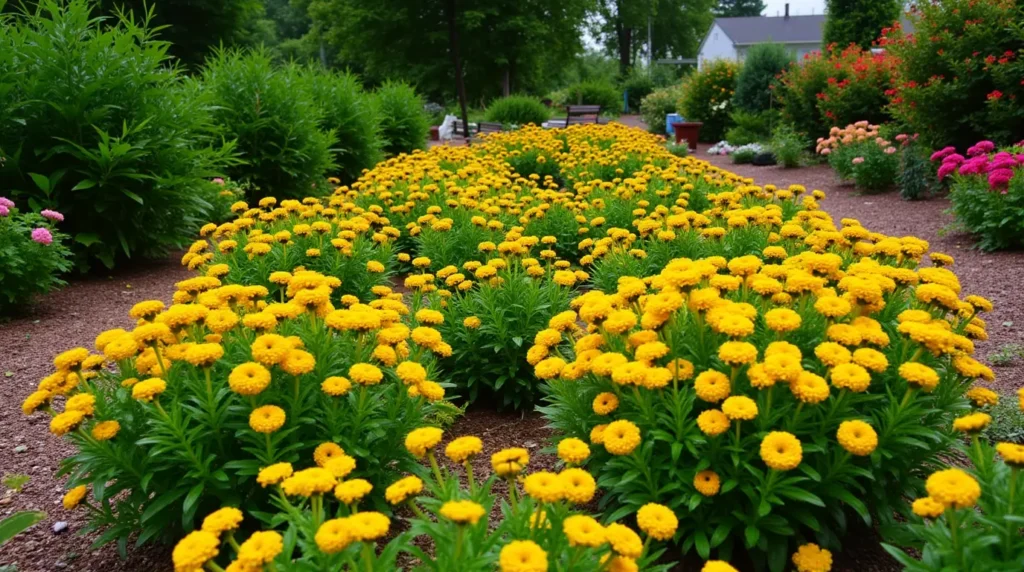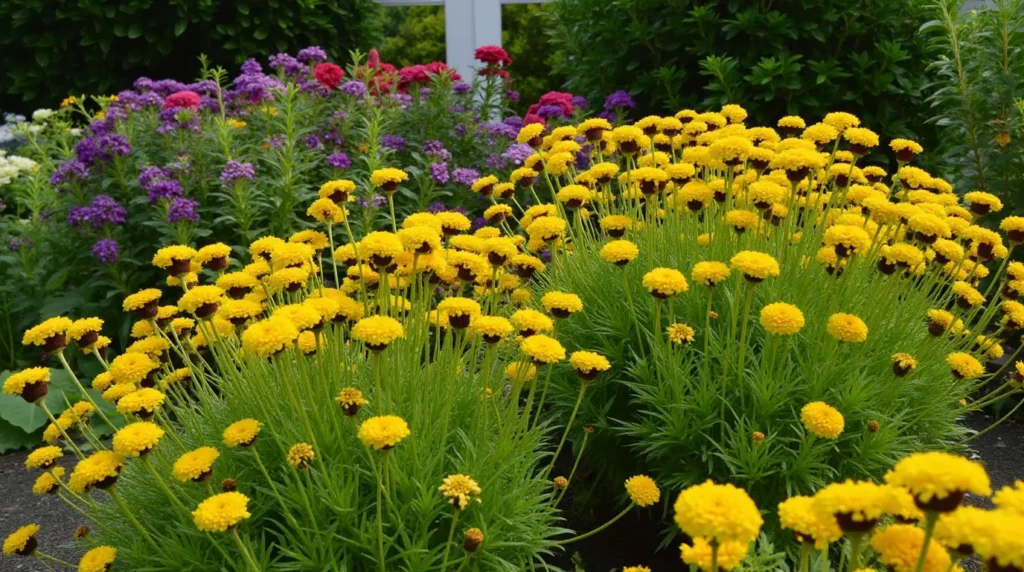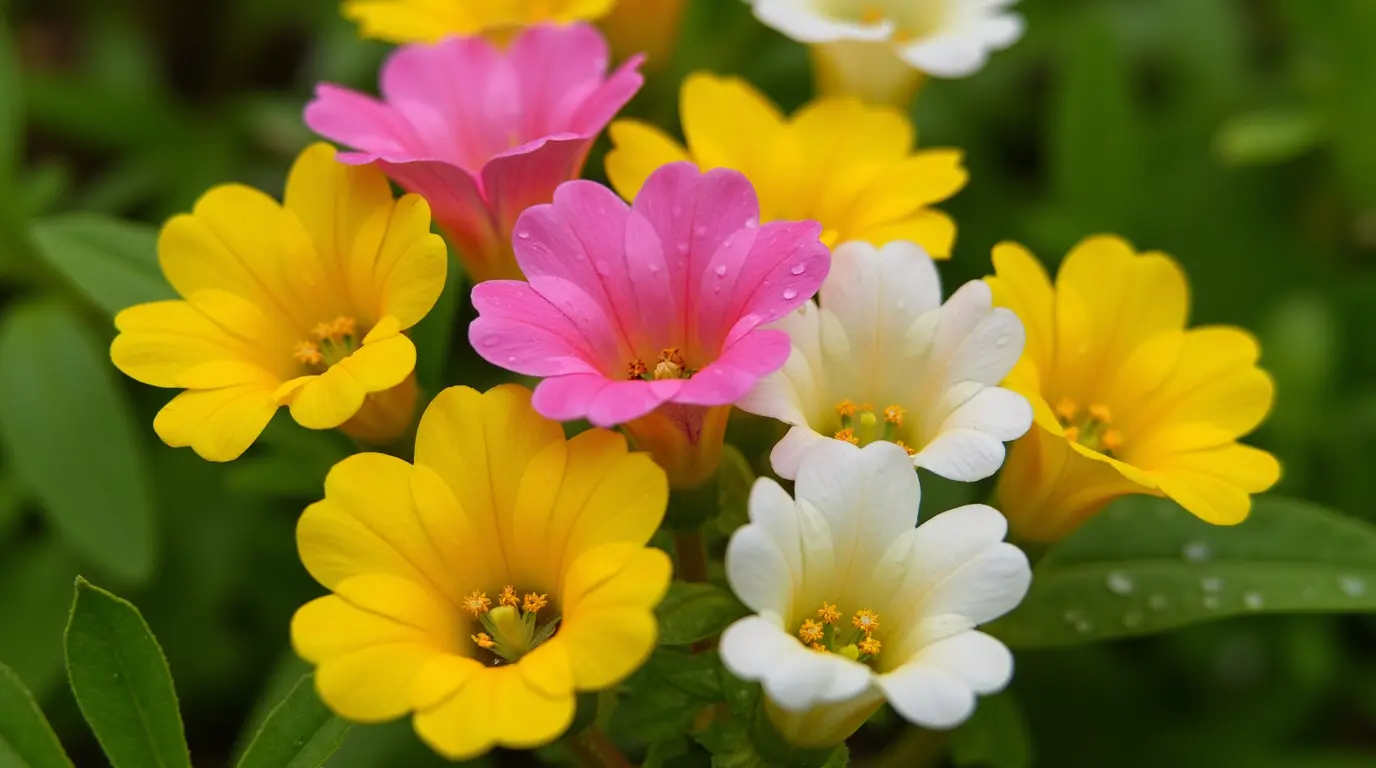Table of Contents
Buttercup flowers brighten up any garden with their vibrant colors. You can find them in yellow, pink, or white. This guide will teach you how to grow and care for these lovely buttercup flowers in your garden. You’ll learn about choosing the right variety, soil, and maintenance. With these tips, you can enjoy the beauty of these flowers in your own backyard.
Key Takeaways
- Buttercup-flowers come in various colors, including yellow, pink, and white
- Proper soil preparation and planting techniques are crucial for successful buttercup-flower growth
- Regular watering and maintenance, such as deadheading and dividing, are essential for the long-term care of buttercup-flowers
- Understanding common pests and diseases that affect buttercup-flowers can help you address any issues promptly
- Buttercup-flowers have a rich symbolic meaning and can add a touch of cheer to your garden
Introduction to Buttercup Flowers
Buttercup flowers, also known as Ranunculus, are vibrant and diverse. They can brighten up any garden. These flowers come in many colors, including buttercup yellow, pink, white, and red.
They have distinctive cup-shaped petals. They can grow well in different climates. This makes them a favorite among gardeners who want to add a whimsical touch to their gardens.
What are Buttercup Flowers?
Buttercup flowers, or Ranunculus, belong to the Ranunculaceae family. They are known for their bright, shiny petals. These petals surround a central cluster of stamens and pistils.
Buttercups can be small and delicate or large and robust. They come in many vibrant colors, like yellow, pink, white, and red.
Why Grow Buttercup Flowers?
There are many reasons to grow buttercup flowers. First, they are stunning, adding color and whimsy to any space. They are also easy to grow and maintain.
This makes them perfect for both new and experienced gardeners. The buttercup-flower meaning is also special. It’s often linked to cheerfulness, optimism, and a zest for life. This makes them great for creating a positive outdoor space.
Choosing the Right Buttercup Variety

When growing persian buttercup flower, yellow buttercup-flower, and pink buttercup-flower, you have many choices. Each type has its own special features. For example, the Persian buttercup has lush, double-petaled blooms. The yellow buttercup and pink buttercup offer vibrant colors.
It’s important to pick a variety that fits your local climate and soil. This ensures your garden will thrive.
The Persian buttercup is a favorite for its beautiful, rose-like flowers. They come in white, yellow, and pink. These flowers love well-drained, fertile soil and do best in full sun to partial shade. They’re perfect for gardeners in USDA Hardiness Zones 6-9.
The yellow buttercup adds a splash of sunny color to any garden. Its bright blooms can grow up to 2 inches wide. This hardy plant does well in many soils and conditions, making it popular across the U.S.
The pink buttercup brings delicate beauty to your garden. Its soft, pastel petals and compact growth make it versatile. It prefers well-drained soil and partial shade, ideal for USDA Hardiness Zones 5-9.
| Variety | Bloom Color | Soil Requirements | Sun Exposure | USDA Hardiness Zones |
| Persian Buttercup | White, yellow, pink | Well-drained, fertile | Full sun to partial shade | 6-9 |
| Yellow Buttercup | Bright yellow | Wide range of soil types | Full sun | 3-9 |
| Pink Buttercup | Soft pink | Well-drained | Partial shade | 5-9 |
Preparing the Soil for Buttercup Flowers
To grow beautiful buttercup-flowers in your garden, start with the soil. These bright buttercup yellow flowers love well-draining, rich soil that’s a bit acidic. Before planting, check your soil and make any needed changes to help them grow well.
Soil Requirements
Buttercup flowers do best in soil with a pH of 5.5 to 6.5. This slightly acidic range helps them get the nutrients they need. The soil also needs to drain well to avoid waterlogged conditions that can harm the roots.
Amending the Soil
- If your soil is too heavy or clay-like, mix in organic matter like compost or peat moss. This will help with drainage and air.
- To make the soil more acidic, add sulfur or aluminum sulfate.
- For extra nutrients, add a balanced, slow-release fertilizer before planting.
By preparing the soil right, you’ll give your buttercup-flowers the best chance to grow. They’ll reward you with their bright, buttercup yellow blooms all season long.
Planting Buttercup Flowers
Planting buttercup flowers requires careful timing and technique. The best time to plant is in the fall. This lets the plants grow strong before spring.
When to Plant
Plant buttercup bulbs or tubers from September to November. This gives them time to grow roots before winter. Your buttercup-flowers will bloom brightly in spring.
Planting Techniques
- Start by loosening the soil and adding compost or well-rotted organic matter. This improves drainage and nutrient content.
- Plant the bulbs or tubers 2-3 inches deep, spacing them 6-8 inches apart.
- Make sure the planting site gets at least 6 hours of direct sunlight. Buttercup-flowers love full sun.
- Water the area well after planting. Keep the soil moist until the plants grow.
By following these steps, you can create the perfect environment for your buttercup-flowers. They will add beauty and charm to your garden.
Caring for Buttercup Flowers
Proper care is key to keeping your buttercup flowers healthy and bright. One important thing is to make sure they get the right amount of water.
Watering Needs
Buttercups like moist soil but need good drainage to avoid waterlogging. Keep an eye on the soil moisture and adjust your watering schedule to keep your plants happy.
- Water buttercups regularly, aiming to keep the soil evenly moist but not saturated.
- Avoid letting the soil dry out completely between waterings, as this can stress the plants.
- Ensure the soil has adequate drainage to prevent root rot and other water-related issues.
- Adjust watering frequency based on the weather conditions, with more frequent watering during hot, dry spells.
By giving your buttercup-flowers the right moisture, you can enjoy their bright blooms and lush foliage all season.
Buttercup Flower Maintenance
To keep your buttercup flowers looking great, regular care is key. You’ll need to deadhead spent blooms and divide overgrown plants.
Deadheading Buttercup Flowers
Deadheading means removing faded buttercup-flowers from the plant. It makes the plant look better and helps it focus on growing new blooms. By doing this often, you can make your buttercups bloom for longer.
Dividing Buttercup Flowers
Buttercup plants can get too crowded over time. Dividing them every few years keeps them healthy and blooming. To divide, dig up the plant and split it into smaller sections with good roots. Then, replant these sections in well-prepared soil, giving them enough space to grow.
By following these easy care steps, your buttercup-flowers will keep blooming beautifully for years.
Pests and Diseases of Buttercup Flowers
The buttercup flowers are easy to grow but can face pests and diseases. These issues can harm their health and look. Knowing about these problems helps keep your buttercup yellow flower garden healthy.
Aphids are a common pest of buttercup-flowers. These small insects suck sap, causing plants to grow poorly and leaves to twist. You can fight aphids with natural methods like ladybugs or insecticidal soap.
Thrips are another problem for buttercup-flowers. These tiny insects eat leaves and flowers, leaving them with a silvery-white mark. To stop thrips, use sticky traps or neem oil.
| Pest/Disease | Symptoms | Treatment |
| Aphids | Stunted growth, distorted foliage | Introduce beneficial insects, use insecticidal soap |
| Thrips | Silvery-white damage pattern on leaves and flowers | Use sticky traps, apply neem oil |
| Powdery Mildew | White, powdery fungal growth on leaves and stems | Apply fungicides, ensure good air circulation |
Besides pests, buttercup-flowers can get diseases like powdery mildew. This disease shows as white, powdery spots on leaves and stems. It weakens the plant. To fight powdery mildew, use fungicides and make sure plants have air to breathe.
By checking your buttercup-flowers often and acting fast on pests or diseases, you can keep your garden bright and healthy. With the right care, these lovely flowers will stay vibrant and brighten up your outdoor area.
Buttercup Flower Meaning

The buttercup flower has a deep symbolic meaning that spans history. These bright flowers are linked with happiness, joy, and new beginnings. They’re a favorite for gifts and celebrations. The flower’s shape is also seen as a symbol of youth, innocence, and a carefree spirit.
Knowing the meaning and symbolism of the buttercup-flower can enrich your garden or floral arrangements. These vibrant flowers remind us to enjoy life’s simple joys. They encourage us to face each day with a positive, light-hearted spirit.
- Happiness and Joy: Buttercups are often given as a symbol of happiness and joy, conveying a sense of cheerfulness and optimism.
- New Beginnings: The buttercup’s association with youth and freshness makes it a fitting representation of new opportunities and starting anew.
- Innocence and Carefree Spirit: The cup-shaped petals of the buttercup are said to embody the qualities of innocence, purity, and a carefree, playful nature.
Whether in a bouquet, your garden, or for a special event, the buttercup-flower brings joy, hope, and positivity. Its rich symbolic meaning makes it a versatile and meaningful choice for many occasions and personal expressions.
Buttercup Flower in the Garden
Buttercup flowers brighten up any garden with their vibrant colors. They fit well in many garden styles, from cottage to formal. They also do well in partial shade, perfect for less sunny spots.
Planting buttercup-flowers in groups makes a beautiful sight. Their yellow or pink colors pop against green leaves. Their unique shape adds to their charm. Use them to line paths, borders, and beds for a whimsical touch.
Buttercup yellow flowers and pink buttercup-flowers are easy to care for. They grow well in different soils and light conditions. This makes them a great choice for many gardeners.
| Buttercup Flower Varieties | Bloom Color | Sunlight Needs |
| Ranunculus acris | Yellow | Full sun to partial shade |
| Ranunculus repens | Yellow | Full sun to partial shade |
| Ranunculus asiaticus | Pink, white, red | Full sun to partial shade |
Looking to add whimsy or a stunning display to your garden? buttercup-flowers are a great pick. They’re easy to care for and suit all skill levels.
Conclusion
Buttercup flowers are a delightful choice for gardeners. They add brightness and charm to outdoor spaces. By following the expert tips in this guide, you can grow and care for these vibrant blooms.
These flowers come in classic and elegant pink varieties. The buttercup yellow flower is a must-have for garden enthusiasts. Their beauty and meaning of cheerfulness make them a favorite.
With the right techniques and care, your buttercup-flower garden will thrive. It will be the envy of your neighborhood. Let these charming flowers transform your outdoor space into a vibrant oasis.
FAQ
What are Buttercup Flowers?
Buttercup-flowers, also known as Ranunculus, are colorful plants with vibrant yellow, pink, and white blooms. They add a bright and whimsical touch to gardens.
Why Should I Grow Buttercup Flowers?
Buttercup-flowers have unique cup-shaped petals and grow well in many climates. They symbolize happiness and new beginnings, making gardens more cheerful.
What Varieties of Buttercup Flowers Can I Grow?
Popular varieties include the Persian buttercup with lush blooms and the yellow and pink buttercup for color. Choose a variety that fits your local climate.
What Soil Requirements Do Buttercup Flowers Have?
They need well-draining, nutrient-rich soil that’s slightly acidic. Check your soil and add organic matter if needed to improve it.
When is the Best Time to Plant Buttercup Flowers?
Plant buttercup bulbs or tubers in the fall for best results. Follow depth and spacing guidelines for optimal growth.
How Should I Water Buttercup Flowers?
Keep the soil moist but well-drained to prevent waterlogging. Monitor soil moisture and adjust watering as needed.
What Maintenance Tasks Should I Perform for Buttercup Flowers?
Deadhead spent blooms to encourage more flowers and divide overgrown plants to rejuvenate them. Deadheading improves appearance and promotes new blooms.
What Pests and Diseases Affect Buttercup Flowers?
Buttercup-flowers can get aphids, thrips, and powdery mildew. Regularly check your plants and use organic pest control or fungicides as needed.
What is the Meaning of Buttercup Flowers?
Buttercup-flowers symbolize happiness, joy, and new beginnings. Their cup-shaped petals represent youth, innocence, and a carefree spirit.
How Can I Incorporate Buttercup Flowers into My Garden?
Buttercup-flowers add vibrant colors and whimsy to gardens. They’re great for borders, beds, and containers. Use them to create a cheerful cottage-style garden or a more formal design.

